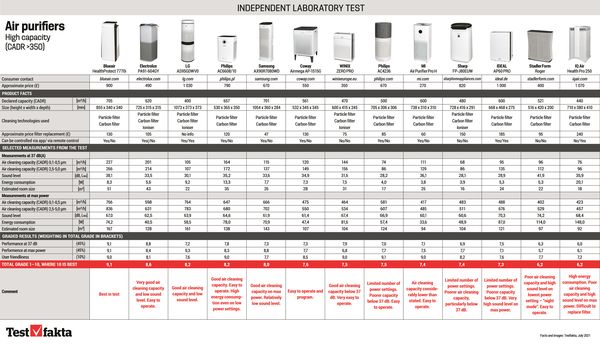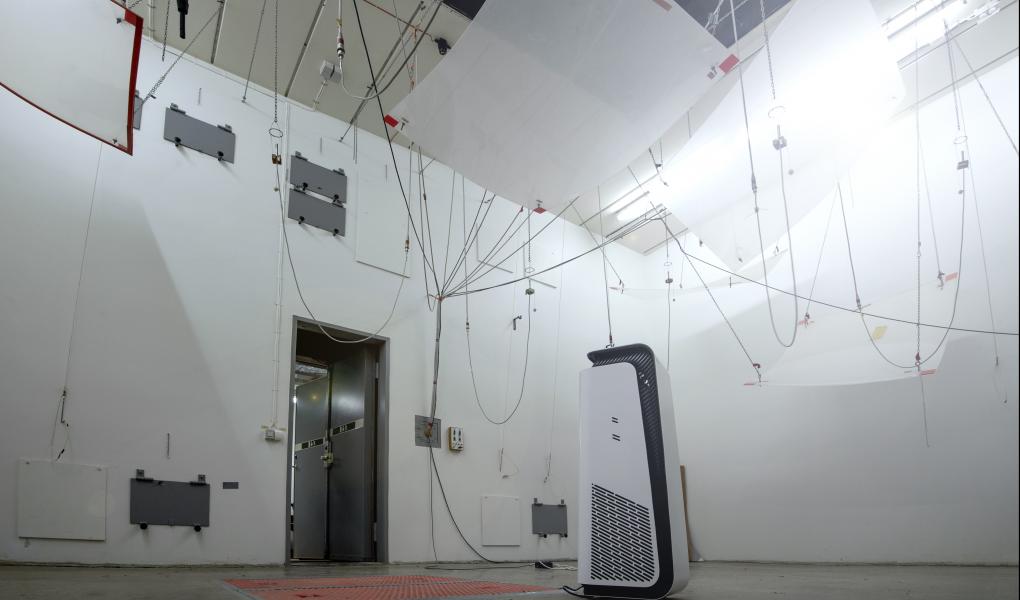The test focused on the capacity of the air purifiers on two settings: maximum and at a sound level of 37 dB, which is considered not to be a disturbing level.
— The sound level should be low enough for the air purifier to be usable in a bedroom,” explains Tobias Eriksson at RISE laboratories.
At 37 decibels, test winner Blueair cleans 227 cubic metres of air per hour, compared with a figure of 201 for the second-placed Electrolux. After the top duo comes a major drop in performance, with the LG in third place managing 105 cubic metres. At the bottom of the table, we find the IQ Air at 76 cubic metres. The Blueair thus cleans three times as much air within the same period.

The appliances were tested using two different particle sizes. The larger particles were 2.5–5.0 micrometres, a size that is not visible to the naked eye in air.
— This category represents bigger particles such as dust and pollen. The smaller particles, at 0.1–0.5 micrometres, are the ones given off by a candle or road vehicles, for example, says Tobias Eriksson.
— It is also worth noting that virus particles are around 0.1–0.2 micrometres in size, so they should also be captured by the air purifiers’ filter. However, we haven’t looked at what happens to any viruses that are trapped in the filter, adds Tobias.
In the second part of the test, the air purifiers were run at maximum capacity. Once again, there were major variations between the different products. The Blueair managed to clean the largest amount of air on the max setting, too. On maximum power, the IQ Air had the highest electricity consumption. The Mi Air purifier Pro H had the lowest consumption, but on the other hand its cleaning capacity was relatively poor. In addition, it performed a long way below the stated level on maximum power.
Most of the manufacturers recommend replacing the filter at least once every six months. However, replacing the filter can be both tricky and expensive. The most expensive is the IQ Air, with a new filter package costing £ 273. And if the price is not off-putting enough, the laboratory test also found replacing the filter to be technically challenging.
— The method for replacing the filter on this machine was not entirely obvious. It really could have been made much easier. Filter replacement should normally be a simple procedure,” says Tobias.
When the RISE laboratory in Borås assessed the user friendliness of the air purifiers, the LG and the Samsung in particular proved cumbersome and difficult to move from room to room. The Electrolux on the other hand has convenient handles that make it easier to move.
— Otherwise, most of the air purifiers work well and have good filters. The difference in performance tends to come down to how well the fans and filter have been fine-tuned to achieve as high an air throughput at as low a sound level as possible,” sums up Tobias Eriksson.

